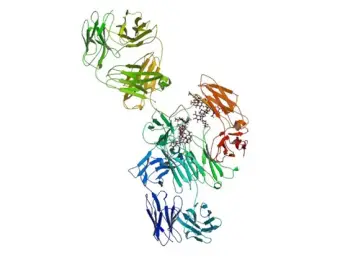Dalbavancin API Manufacturers & Suppliers
Find, compare & contact
Filters
Custom request?
Type
Production region
Qualifications
Country of origin
Producer
Produced in:
Established in: 2019
MOQ: 1 kg
Employees: 10+

Focused on pharmaceutical industry

Reasonable price for the customers

Full service from R&D stage to commercial stage
+ 0
All certificates
Producer
+ 0
All certificates
Producer
+ 0
All certificates
How does it work?
You can register for free as long as you are registering on behalf of a legal company related to the pharmaceutical industry
Search in the search bar the product that you’re looking for. We’ll show you an overview of all available suppliers. Use the filters to select the relevant suppliers only
Have you found interesting suppliers? Then it’s time to contact them. Use the send inquiry button and send them a message. You can send for each product, 3 inquiries per week
Suppliers get notified by Pharmaoffer that they’ve received a new inquiry. They will come back to you with their questions, certificates, and offer in the chat on Pharmaoffer. We will send you an email in case of any news
Does the supplier meet your quality and commercial requirements? Then you can place the order. Just follow the steps of our order module
Looking for Dalbavancin API 171500-79-1?
- Description:
- Here you will find a list of producers, manufacturers and distributors of Dalbavancin. You can filter on certificates such as GMP, FDA, CEP, Written Confirmation and more. Send inquiries for free and get in direct contact with the supplier of your choice.
- API | Excipient name:
- Dalbavancin
- Synonyms:
- dalbavancin B0
- Cas Number:
- 171500-79-1
- DrugBank number:
- DB06219
- Unique Ingredient Identifier:
- B0U42518WL
About Dalbavancin
It's time for some technical information for the ones who understand chemistry: Dalbavancin is a second-generation lipoglycopeptide antibiotic that was designed to improve on the natural glycopeptides currently available, such as vancomycin and teicoplanin 1. Modifications from these older glycoprotein classes facilitated a similar mechanism of action for dalbavancin but with increased activity and once-weekly dosing . Its use is indicated for the treatment of acute bacterial skin and skin structure infections (ABSSSI) caused by the following gram-positive microorganisms: Staphylococcus aureus (including methicillin-susceptible and methicillin-resistant strains), S. pyogenes, S.
agalactiae, S. dysgalactiae, the S. anginosus group (including S. anginosus, S. intermedius, and S. constellatus), and Enterococcus faecalis (vancomycin susceptible strains) 4. Dalbavancin acts by interfering with bacterial cell wall synthesis by binding to the D-alanyl-D-alanine terminus of nascent cell wall peptidoglycan and preventing cross-linking .
You can ask the supplier for more technical information about the product.
Dalbavancin is a type of Glycopeptides
Glycopeptides are a subcategory of pharmaceutical active pharmaceutical ingredients (APIs) that play a crucial role in the field of medicinal chemistry and drug development. These complex molecules consist of a peptide chain with one or more attached carbohydrate chains, known as glycans.
Glycopeptides possess unique chemical and structural properties that contribute to their diverse biological activities. They are primarily recognized for their potent antimicrobial properties and are commonly used to combat various bacterial infections, including methicillin-resistant Staphylococcus aureus (MRSA) and other multidrug-resistant strains. This makes them highly valuable in the pharmaceutical industry.
The glycan moieties present in glycopeptides contribute to their mode of action. These carbohydrates aid in the recognition and binding of the glycopeptides to specific bacterial targets, inhibiting cell wall synthesis and disrupting bacterial growth. This mechanism of action sets glycopeptides apart from other classes of antibiotics, making them effective against resistant bacterial strains.
Glycopeptides can be produced through synthetic or semi-synthetic methods, with natural sources such as soil bacteria serving as starting materials. Vancomycin and teicoplanin are examples of well-known glycopeptide antibiotics. Researchers continue to explore the potential of glycopeptides in areas beyond antimicrobial applications, including cancer therapy and drug delivery systems.
In summary, glycopeptides represent a vital subcategory of pharmaceutical APIs with exceptional antimicrobial properties and significant potential in various therapeutic applications. Their complex structure and unique mechanism of action make them valuable assets in the fight against drug-resistant bacteria and other diseases.
Dalbavancin (Glycopeptides), classified under Antibacterials
Antibacterials, a category of pharmaceutical active pharmaceutical ingredients (APIs), play a crucial role in combating bacterial infections. These APIs are chemical compounds that target and inhibit the growth or kill bacteria, helping to eliminate harmful bacterial pathogens from the body.
Antibacterials are essential for the treatment of various bacterial infections, including respiratory tract infections, urinary tract infections, skin and soft tissue infections, and more. They are commonly prescribed by healthcare professionals to combat both mild and severe bacterial infections.
Within the category of antibacterials, there are different classes and subclasses of APIs, each with distinct mechanisms of action and target bacteria. Some commonly used antibacterials include penicillins, cephalosporins, tetracyclines, macrolides, and fluoroquinolones. These APIs work by interfering with various aspects of bacterial cellular processes, such as cell wall synthesis, protein synthesis, DNA replication, or enzyme activity.
The development and production of antibacterial APIs require stringent quality control measures to ensure their safety, efficacy, and purity. Pharmaceutical manufacturers must adhere to Good Manufacturing Practices (GMP) and follow rigorous testing protocols to guarantee the quality and consistency of these APIs.
As bacterial resistance to antibiotics continues to be a significant concern, ongoing research and development efforts aim to discover and develop new antibacterial APIs. The evolution of antibacterials plays a crucial role in combating emerging bacterial strains and ensuring effective treatment options for infectious diseases.
In summary, antibacterials are a vital category of pharmaceutical APIs used to treat bacterial infections. They are designed to inhibit or kill bacteria, and their development requires strict adherence to quality control standards. By continually advancing research in this field, scientists and pharmaceutical companies can contribute to the ongoing battle against bacterial infections.
Dalbavancin manufacturers | traders | suppliers
We have 3 companies offering Dalbavancin produced in 0 different countries.
Get in contact with the supplier of your choice:
- Apino Pharma Co., Ltd. from China, product country of origin China
- Gnosis Bioresearch S.R.L. from Italy, product country of origin Italy
- Sanofi from France, product country of origin France
Let the supplier know whether you are looking for a product with a specific monograph such as EP (Ph. Eur.), USP, JP, BP or another quality. Or, whether you are looking for hydrochloride (HCl), anhydricum, base, micronisatum or a specific purity.
You can use the filters to find high-quality suppliers. For example, you can select GMP, FDA or ISO certified suppliers. Visit our FAQ page or use the chat box in the corner to get more information about Pharmaoffer.









